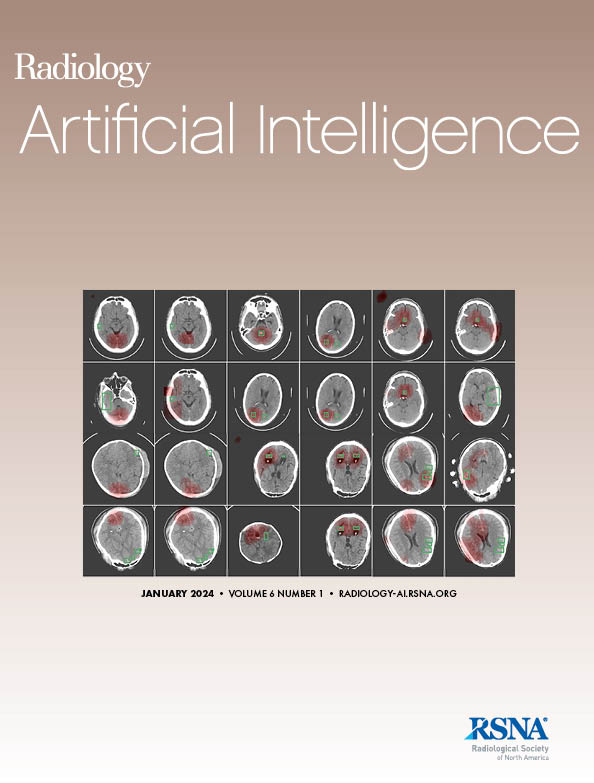求助PDF
{"title":"区分FDA对人工智能医疗器械上市授权的严谨性和透明度。","authors":"Abdul Rahman Diab, William Lotter","doi":"10.1148/ryai.250369","DOIUrl":null,"url":null,"abstract":"<p><p>The increasing prevalence of AI-enabled medical devices presents significant opportunities for improving patient outcomes. However, recent studies based on public FDA summaries have raised concerns about the extent of validation that such devices undergo before FDA marketing authorization and subsequent clinical deployment. Here, we clarify key concepts of FDA regulation and provide insights into the current standards of performance validation, focusing on radiology AI devices. We distinguish between two fundamentally different but often conflated concepts: validation rigor-the quality and comprehensiveness of the evidence supporting a device's performance-and validation transparency-the extent to which this evidence is publicly accessible. We begin by describing the inverse relationship between the amount of performance data contained and the transparency of specific components of an FDA submission. Drawing on FDA guidelines and on our own experience developing authorized AI devices, we then outline current validation standards and present a mapping from common radiology AI device types to their typical clinical study designs. We conclude with actionable recommendations, advocating for a balanced approach tailored to specific use cases while still enforcing certain universal standards. These measures will help ensure that AI-enabled medical devices are both rigorously evaluated and transparently reported, thereby fostering greater public trust and enhancing clinical utility. ©RSNA, 2025.</p>","PeriodicalId":29787,"journal":{"name":"Radiology-Artificial Intelligence","volume":" ","pages":"e250369"},"PeriodicalIF":13.2000,"publicationDate":"2025-09-24","publicationTypes":"Journal Article","fieldsOfStudy":null,"isOpenAccess":false,"openAccessPdf":"","citationCount":"0","resultStr":"{\"title\":\"Distinguishing between Rigor and Transparency in FDA Marketing Authorization of AI-enabled Medical Devices.\",\"authors\":\"Abdul Rahman Diab, William Lotter\",\"doi\":\"10.1148/ryai.250369\",\"DOIUrl\":null,\"url\":null,\"abstract\":\"<p><p>The increasing prevalence of AI-enabled medical devices presents significant opportunities for improving patient outcomes. However, recent studies based on public FDA summaries have raised concerns about the extent of validation that such devices undergo before FDA marketing authorization and subsequent clinical deployment. Here, we clarify key concepts of FDA regulation and provide insights into the current standards of performance validation, focusing on radiology AI devices. We distinguish between two fundamentally different but often conflated concepts: validation rigor-the quality and comprehensiveness of the evidence supporting a device's performance-and validation transparency-the extent to which this evidence is publicly accessible. We begin by describing the inverse relationship between the amount of performance data contained and the transparency of specific components of an FDA submission. Drawing on FDA guidelines and on our own experience developing authorized AI devices, we then outline current validation standards and present a mapping from common radiology AI device types to their typical clinical study designs. We conclude with actionable recommendations, advocating for a balanced approach tailored to specific use cases while still enforcing certain universal standards. These measures will help ensure that AI-enabled medical devices are both rigorously evaluated and transparently reported, thereby fostering greater public trust and enhancing clinical utility. ©RSNA, 2025.</p>\",\"PeriodicalId\":29787,\"journal\":{\"name\":\"Radiology-Artificial Intelligence\",\"volume\":\" \",\"pages\":\"e250369\"},\"PeriodicalIF\":13.2000,\"publicationDate\":\"2025-09-24\",\"publicationTypes\":\"Journal Article\",\"fieldsOfStudy\":null,\"isOpenAccess\":false,\"openAccessPdf\":\"\",\"citationCount\":\"0\",\"resultStr\":null,\"platform\":\"Semanticscholar\",\"paperid\":null,\"PeriodicalName\":\"Radiology-Artificial Intelligence\",\"FirstCategoryId\":\"1085\",\"ListUrlMain\":\"https://doi.org/10.1148/ryai.250369\",\"RegionNum\":0,\"RegionCategory\":null,\"ArticlePicture\":[],\"TitleCN\":null,\"AbstractTextCN\":null,\"PMCID\":null,\"EPubDate\":\"\",\"PubModel\":\"\",\"JCR\":\"Q1\",\"JCRName\":\"COMPUTER SCIENCE, ARTIFICIAL INTELLIGENCE\",\"Score\":null,\"Total\":0}","platform":"Semanticscholar","paperid":null,"PeriodicalName":"Radiology-Artificial Intelligence","FirstCategoryId":"1085","ListUrlMain":"https://doi.org/10.1148/ryai.250369","RegionNum":0,"RegionCategory":null,"ArticlePicture":[],"TitleCN":null,"AbstractTextCN":null,"PMCID":null,"EPubDate":"","PubModel":"","JCR":"Q1","JCRName":"COMPUTER SCIENCE, ARTIFICIAL INTELLIGENCE","Score":null,"Total":0}
引用次数: 0
引用
批量引用

 求助内容:
求助内容: 应助结果提醒方式:
应助结果提醒方式:


